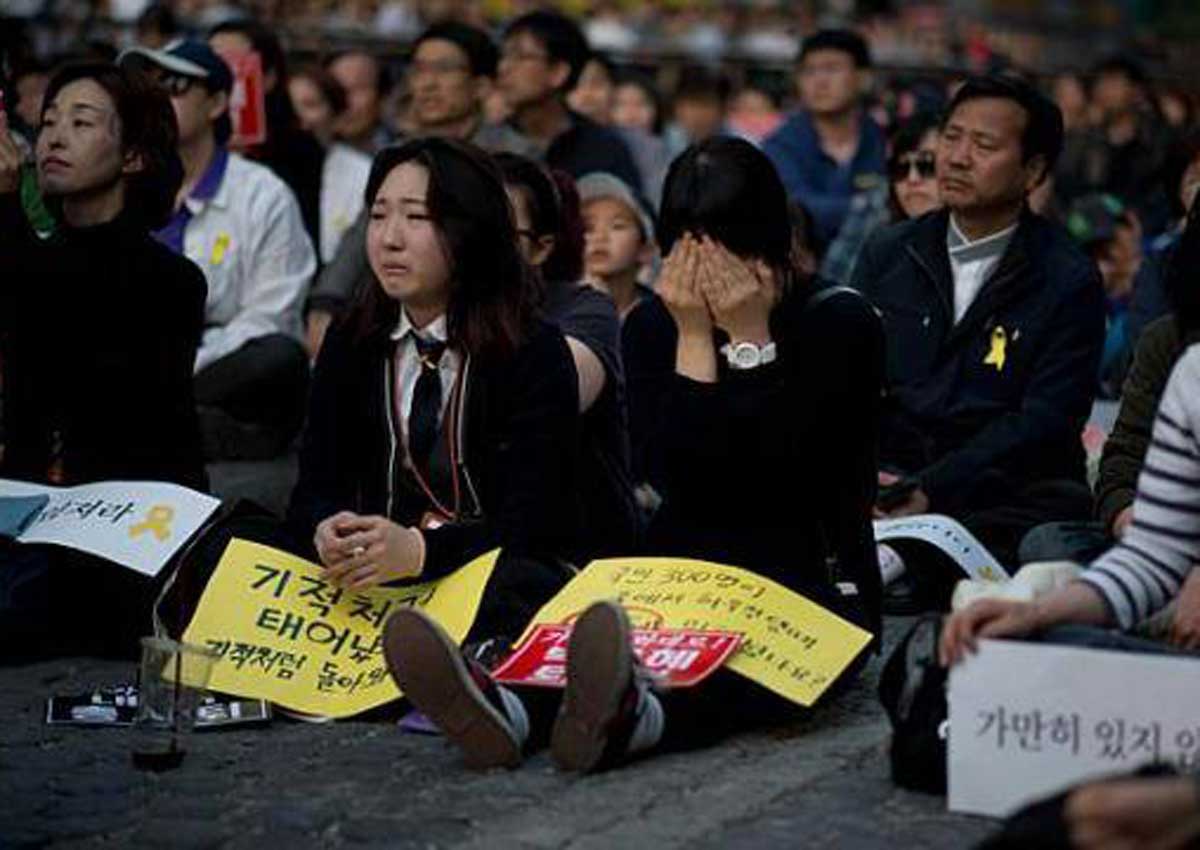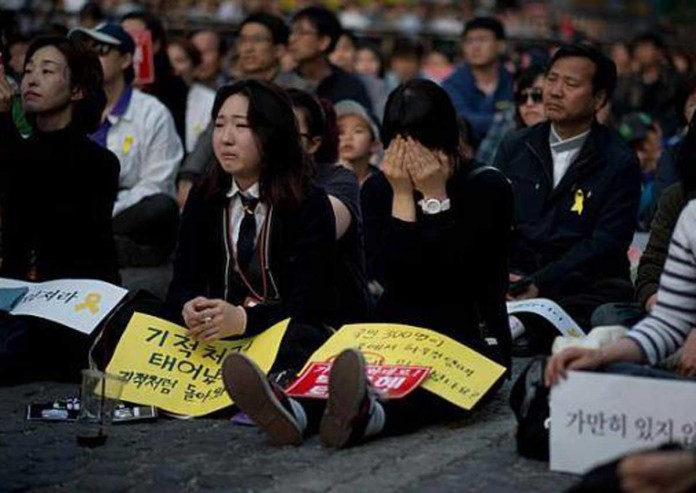Seoul – South Korea on Saturday marked the second anniversary of the Sewol ferry disaster, as distraught families still seeking relatives’ remains hope the massive sunken vessel can be recovered from the ocean floor.
More than 300 people died, mostly students, when the Sewol sank off the southwestern island of Jindo, in a tragedy that shocked and enraged the country.
Following the disaster, it became clear it was primarily caused by human error – an illegal redesign, overloaded cargo bay, inexperienced crew and a questionable relationship between operators and state regulators.
Memorial events were planned Saturday in Seoul and in Ansan, where the students studied.
Bringing the 6,825-tonne ferry to the surface has been a key demand of the victims’ families, who cling to hopes that nine bodies still unaccounted for may yet be recovered.
Seoul announced last year its plans to salvage the ship and selected a Chinese company to spearhead the $72 million project.
The operation to raise the vessel is expected to begin next month, and could be finished by late July.
“The purpose of our salvage operation is to bring back the nine missing bodies safely to the families,” Yeon Yeong-Jin, an official from South Korea’s Maritime Ministry, which is overlooking the operation, told reporters this week.
The Sewol lies more than 40 metres (130 feet) beneath the sea’s surface, and officials say lifting the 145-metre-long vessel from the seabed without splitting it into sections first will be the main challenge.
“Unfortunately, nothing can be guaranteed and we can only do the very best we can do to ensure that the risk is minimised,” said Simon Burthem, a naval architect at TMC, a global consulting firm involved in the salvage project.
Still, he said there was an 80 per cent chance the operation would succeed.
“Lifting the wreck in one piece from such a depth has never been done before, so this is a very, very difficult and challenging project and indeed a world first,” he said.
Wang Weiping, the site superintendent of the Chinese salvage company, praised the dangerous work required by dive teams in often treacherous conditions ahead of the planned ship recovery.
Their main task had been to seal the vessel’s with netting to ensure nothing – such as human remains – tumbles out when the ship is being lifted.
For the families of the nine victims whose bodies were never recovered, the two-year wait has been emotionally draining.
“It’s been 730 days and I can see the ocean before me,” said Lee Keum-Hui, who has been camping out at Paengmok harbour near the salvage site, praying for the recovery of her 16-year-old daughter’s body.
“I know where she is but I can’t get her,” Lee said.
“I know the government can do more. But all I can do is just wait and trust its words,” she told AFP.
Other bereaved family members accused the government of a lack of transparency.
“Everything is conducted behind closed doors and the families are not permitted to observe the recovery operation,” said Jung Seong-Wook, who acts as a families’ representative for the salvage project.
The maritime ministry says it can arrange trips for the families as long as they do not “disrupt salvage operations,” stressing the need for “intense concentration” at what they call a critical time.
For relatives like Lee, the prospect of of not recovering victims’ remains is almost unbearable.
“We tremble with fear at even the slightest chance of never finding the missing bodies,” she said.






